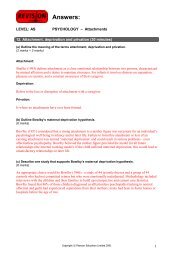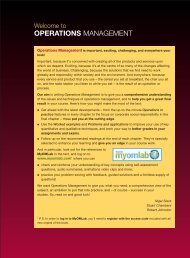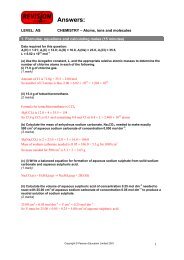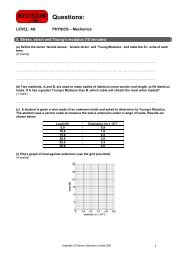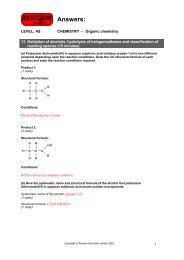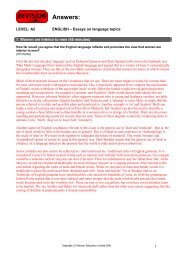The Dove Campaign for Real Beauty - Pearson
The Dove Campaign for Real Beauty - Pearson
The Dove Campaign for Real Beauty - Pearson
Create successful ePaper yourself
Turn your PDF publications into a flip-book with our unique Google optimized e-Paper software.
Part 1 Marketing nowDeficient products—Products that have neitherimmediate appeal norlong-term benefits.Pleasing products—Products that give highimmediate satisfaction butmay hurt consumers inthe long run.Salutary products—Products that have lowappeal but may benefitconsumers in the longrun.Desirable products—Products that giveboth high immediatesatisfaction and highlong-run benefits.heating and air-conditioning, yet we need to conserve energy; the growing number of cars on theroad, not least a fast-rising source of carbon emissions, overwhelm the benefits of improved fuelefficiency, but few bother to reduce car ownership per household. Marketing has to be more alertto the inconsistencies between consumer wants and society’s welfare. Where there is insufficientdrive from within the consumer movement and consumers’ own sense of responsibility,marketers would do better to control or regulate their own behaviour in providing undesirablegoods or services <strong>for</strong> society at large. If not, legislation is likely to do that <strong>for</strong> them.“What consumers want is sometimes at odds with societal welfare.A societally oriented marketer wants to design products that are not only pleasing but alsobeneficial. <strong>The</strong> difference is shown in Figure 2.3. Products can be classified according to theirdegree of immediate consumer satisfaction and long-run consumer benefit. Deficient products,such as bad-tasting and ineffective medicine, have neither immediate appeal nor long-run benefits.Pleasing products give high immediate satisfaction but may hurt consumers in the long run.Examples include cigarettes and junk food. Salutary products have low appeal but may benefitconsumers in the long run – <strong>for</strong> instance, seat belts and air bags. Desirable products give both highimmediate satisfaction and high long-run benefits, such as a tasty and nutritious breakfast food.Examples of desirable products abound. Philips Lighting’s Earth Light compact fluorescentlight bulb provides good lighting while giving long life and energy savings. Toyota’s hybrid Priusgives both a quiet ride and fuel efficiency. An interesting feature of economic development is thatthe energy needed to generate each unit of output declines as wealth increases. <strong>The</strong>re are severalreasons <strong>for</strong> this: the shift towards services, the use of more efficient manufacturing, the compressionof more value into added-value products, and technological advance. <strong>The</strong> iPod is awonderful example of a desirable product that has huge environmental benefits:“In World War II recorded music was not available because the shellac used in making shortlived78 rpm discs was a strategic material. That is unsurprising given that shellac camefrom the secretion of the lac insect found only in the <strong>for</strong>ests of Assam and Thailand! Shortlyafter the advent of rock’n’roll in the 1950s, the 5-inch 45 rpm and long-playing albums weremade of much less expensive and longer lasting vinyl. Suddenly good recordings could be made<strong>for</strong> less. <strong>The</strong>n came unattractive cassette, everlasting streams of which often decoratedroadsides. At last came almost indestructible and crackle-free CDs in their perfectly destructiblecases. Now, the taste <strong>for</strong> a piece of music wore out be<strong>for</strong>e the record. Finally, with the MP3player with electronic downloads comes the ability to carry around weeks of music that wouldhave taken a truckload of 78s to store.Figure 2.3 Societalclassification of new products100




